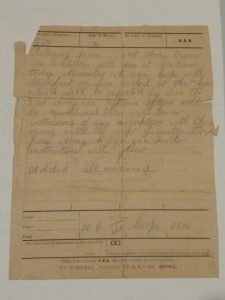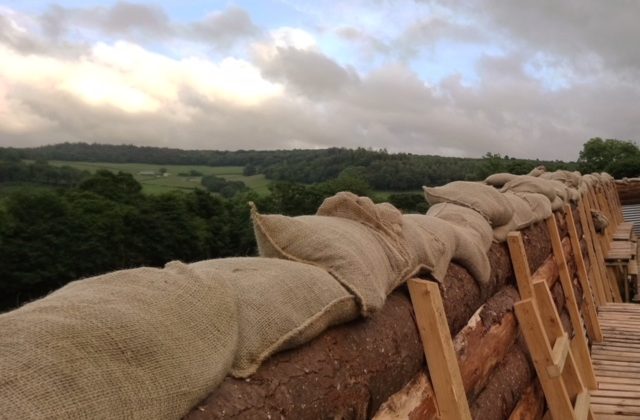Hostilities will cease at 11 hours.
Everybody knows that the Armistice, ending The Great War, was signed on the 11th hour of the 11th day in the 11th month of 1918…
But how did the troops know?
The answer is by a signal, transmitted via Morse Code. The signal was flashed along the line in France and Flanders, declaring the war to be over. Morse Code, a series of dots and dashes, was picked up by signallers along the line. It was then translated and passed on to all troops fighting on the front line.
The 10th Battalion DCLI were in Ruesnes when the message was received, and their War Diary records the message they received on that historic morning:
“Hostilities will cease at 11.00 hours to-day, 11th November aaa Troops will stand fast on line reached at that hour which will be reported by wire to Corps Headquarters. Defensive precautions will be maintained aaa There is to be no intercourse of any description with the enemy aaa No Germans are to be allowed to enter our lines, any doing so will be taken prisoner.”
We have the very signal received by Lieutenant Colonel R.C.F Edyvean, in the Museum collection. He was the Lieutenant commanding the 1st/5th Battalion DCLI at the signing of the Armistice.

The signal will have been received by signallers for the 3rd Army, under who’s command the 1st/5th DCLI were fighting, and this message will have been sent down the lines of the 3rd Army.
The signal reads very much like that message received by the 10th DCLI; the same signal will have been passing down the line to all troops, with only minor changes included by commanding troops, or specific to a situation.
Following from 3rd Army begins
aaa Hostilities will cease at 1100 hours
today November 11th aaa Corps will
standfast on line reached at that hour
which will be reported by wire to
3rd Army aaa Defensive cautions will
be maintained there will be no
intercourse of any description with the
enemy until the receipt of instructions
from Army hdqrs aaa Further
instructions will follow
added all concerned
HQ III Corps 0800
*Note the use of aaa within both signals, this indicates a line break in the message, and would be have a well-known system of punctuating messages.
For more information about how the military communicated between battle lines look out for our upcoming communications display in the museum!

